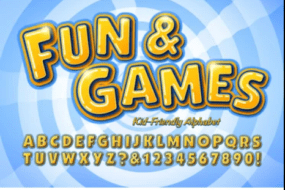
Games have always been a fundamental part of human culture. Whether played for leisure, social bonding, education, or spiritual practice, games reflect the essence of societies, showcasing creativity, history, and community spirit. From ancient traditions passed through generations to modern sports and digital entertainments, people across the globe have found countless ways to play. Let’s take a journey around the world to discover some of the most unique and fascinating games and pastimes that different cultures cherish.
1. Africa: Strategy, Rhythm, and Community
Mancala – A Game of Strategy
One of the oldest known board games in the world, Mancala has roots in Africa, dating back over 1,000 years. The game involves a board with rows of small pits and seeds or stones. Players take turns scooping and redistributing the pieces with the goal of capturing more than their opponent.
Mancala exists in many variations, from Bao in East Africa to Oware in West Africa. More than just a game, it teaches mathematical thinking and strategic planning. Traditionally, elders used it to pass down wisdom, and it’s often played in villages during the evening hours as a social gathering.
Gule Wamkulu – Dance of the Spirits (Malawi, Zambia, Mozambique)
While not a game in the traditional sense, Gule Wamkulu is a ritual dance performed by the Chewa people. Featuring masked dancers and energetic movements, it blends play, performance, and spiritual significance. It often accompanies festivals, initiation ceremonies, and funerals, blurring the lines between fun and cultural storytelling.
2. Asia: Harmony, Focus, and Innovation
Kabaddi (India and Southeast Asia)
A mix of tag and wrestling, Kabaddi is a traditional Indian sport that has become internationally recognized. Players cross into enemy territory chanting “Kabaddi, Kabaddi” without taking a breath, trying to tag opponents and return without being tackled.
This fast-paced, contact sport demands strength, agility, and lung control. It’s particularly popular in rural India but has professional leagues and a growing international following.
Go (China, Korea, Japan)
Go, known as Weiqi in China, Baduk in Korea, and Igo in Japan, is a deeply strategic board game over 2,500 years old. Players use black and white stones to gain territory on a 19×19 grid. While the rules are simple, mastering Go takes a lifetime, and it’s often considered the ultimate test of intellectual stamina.
Go has a rich philosophical background, symbolizing the balance of yin and yang. In East Asia, professional Go players are revered similarly to athletes or chess grandmasters.
Takraw (Southeast Asia)
Sepak Takraw is like volleyball but with a twist—players use their feet, head, knees, and chest to strike a ball over a net. This game, popular in Thailand, Malaysia, and Indonesia, is a stunning display of agility and coordination. Watching a Takraw match feels like seeing martial arts mixed with acrobatics.
3. Europe: Time-Honored Sports and Quirky Competitions
Bocce (Italy)
Dating back to the Roman Empire, Bocce is a lawn game where players try to throw heavy balls closest to a small target ball called the pallino. Often played in parks and beaches across Italy, it emphasizes precision, patience, and camaraderie.
Bocce has inspired similar games like pétanque in France and boules throughout Europe, highlighting how a simple pastime can be universally appealing.
Cheese Rolling (England)
The Cooper’s Hill Cheese-Rolling event in Gloucestershire is delightfully absurd and deeply beloved. Participants chase a rolling wheel of cheese down a steep hill, often tumbling and colliding in chaotic hilarity. The first to reach the bottom wins the cheese.
Though dangerous, the tradition continues annually, drawing thrill-seekers from around the world and exemplifying the British love for eccentric fun.
Kubb (Sweden)
Known as “Viking Chess,” Kubb is a lawn game where players knock down wooden blocks (kubbs) by throwing batons. It’s popular during summer holidays and family gatherings, especially on Sweden’s Gotland island.
Kubb blends strategy and skill with a relaxed, social vibe—often accompanied by food, drinks, and laughter. It’s now spreading internationally as a backyard favorite.
4. The Americas: From Ancient Rituals to Modern Icons
Ulama – Ancient Mesoamerican Ballgame (Mexico)
Ulama is a modern version of the Mesoamerican ballgame played by the Aztecs and Maya. Using a heavy rubber ball, players keep it in play using their hips, sometimes for hours. In ancient times, the game had religious significance and was played in grand stone arenas, possibly even as a form of conflict resolution.
Today, Ulama is kept alive in small communities, linking modern Mexicans to their rich indigenous heritage.
Cornhole (USA)
Originally a Midwestern pastime, Cornhole has become a staple at American tailgate parties and backyard barbecues. Players toss beanbags at a slanted board with a hole, scoring points for accuracy.
It’s simple, fun, and social—perfect for all ages. It even has national championships and a professional league, showing how even the simplest games can evolve into organized sports.
Brazilian Capoeira – Martial Art Meets Dance
Capoeira is a mesmerizing blend of dance, music, and martial arts developed by enslaved Africans in Brazil. Practitioners form a circle, or roda, and take turns performing rhythmic, acrobatic moves that resemble both fighting and dancing.
It’s more than a game—it’s resistance, culture, and expression all rolled into one, often accompanied by traditional instruments like the berimbau.
5. Oceania: Nature-Inspired Play and Cultural Heritage
Poi (New Zealand – Māori Tradition)
Poi is a traditional performance art of the Māori people, involving swinging tethered weights in rhythmical patterns. Originally used to train warriors for coordination and strength, poi has become a graceful dance performed by both men and women.
Modern poi incorporates LED lights and music festivals, making it a popular flow art around the world. But at its heart, it remains a cultural expression of storytelling and skill.
Boomerang Throwing (Australia – Aboriginal Origins)
The boomerang is one of the world’s most iconic throwing tools, originating from Australia’s Aboriginal cultures. While some boomerangs were hunting tools, returning boomerangs were often used for sport or ceremonial games.
Today, boomerang throwing is both a recreational activity and competitive sport, celebrating precision, physics, and indigenous ingenuity.
6. The Middle East: Ancient Games and Intellectual Traditions
Backgammon (Persia / Iran)
One of the oldest known board games, Backgammon has roots in ancient Persia and continues to be widely played across the Middle East. With a mix of luck and strategy, players race to move all their pieces off the board.
Coffee houses in Iran, Turkey, and Lebanon often feature backgammon matches accompanied by tea and conversation. It’s as much about connection as competition.
Buzkashi (Afghanistan and Central Asia)
Buzkashi is a dramatic horseback game where players attempt to drag a goat carcass across a goal line. It’s physically intense and culturally significant, rooted in nomadic warrior traditions.
Although the premise might shock outsiders, Buzkashi represents honor, strength, and skill among Central Asian horsemen. The sport is so important that national tournaments are held, and top riders gain celebrity status.
7. Modern Global Pastimes
Esports and Video Games
Today, digital games have created a new kind of global culture. From League of Legends in South Korea to FIFA tournaments in Europe and Fortnite across the Americas, video games are a dominant form of modern play.
Esports arenas fill with thousands of fans, and online streaming connects gamers across continents. These new pastimes offer not only entertainment but also opportunities for social interaction, teamwork, and even careers.
Board Game Cafés (Worldwide)
Board games are experiencing a renaissance. From classics like Catan and Risk to indie creations and role-playing games like Dungeons & Dragons, people are rediscovering the joy of face-to-face gaming.
Cafés dedicated to board games have popped up in cities from Tokyo to Berlin to São Paulo. They offer a chance to unplug, interact, and explore strategy and storytelling with friends.
Conclusion: The Universal Language of Play
Games, in all their forms, are more than just ways to pass the time. They are expressions of culture, values, identity, and imagination. They teach us cooperation, competition, creativity, and even resilience.
From the rhythmic beats of Capoeira to the contemplative stillness of Go, from chasing cheese down hills to building digital empires, play is a universal language that connects humanity.
Whether ancient or modern, physical or digital, silly or serious—games remind us that no matter where we come from, we all love to play.






















